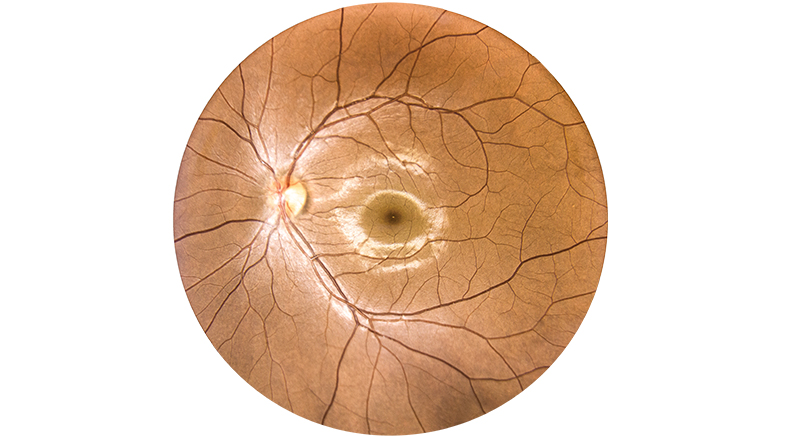Brave NUE field
-
- from Shaastra :: vol 03 issue 09 :: Oct 2024

Researchers are scouring the fields for crops that can withstand nutritional stress.
There's a buzz in the fields. It is still rather muted, but a new generation of researchers is delving deep into the Nutrition Utilisation Efficiency (NUE) of crops.
In an agricultural scenario dominated by overfeeding crops with fertilisers to maximise yield, the focus for decades was on varieties that thrived in a nutrient-rich environment. Not much attention was given to the efficiency with which some varieties utilised these resources, and there was little focus on the long-term, adverse impact of fertilisers. In a changed world, where the fertiliser is counted not just in production cost, but also as a polluting agent, the focus in some quarters is on a crop's NUE.
Microbiologists and plant physiologists are digging into the secrets that some plants hold within them, making them more adept than their siblings at utilising available nutrients. Their search is to identify the highest NUE scoring varieties in different crops.

Scientist Nandula Raghuram's laboratory at Guru Gobind Singh Indraprastha University, New Delhi, has been particularly busy. Two of his researchers — Bhumika Madan and Ashu Tyagi — have identified rice varieties with commendable NUE capabilities: one with dual nutrient uptake efficiency, and another with the rare combination of high NUE and a quick crop cycle.
Dealing with nitrogen emissions is an important aspect of NUE. Raghuram, who has been working in the area for long, heads the Centre for Sustainable Nitrogen and Nutrient Management at the university, where he has focused on nitrogen utilisation by rice crops. Rice, an input-intensive crop, is the largest consumer of fertilisers in India and the largest source of agriculture-based nitrogen emissions, he says. The chief fertilisers in the field, NPK or nitrogen-phosphorus-potassium and urea, are nitrogen-rich chemicals.
India is second only to China in emissions of nitrous oxide. Much of the nitrogen emissions comes from agriculture.
India is second to China in emissions of nitrous oxide, a greenhouse gas. The bulk of nitrogen emission in India is from the agriculture sector. "If we can develop nutrient use efficient varieties of rice, we will be able to reduce the cost of fertilisers majorly," says Raghuram.
His team focuses primarily on the functional biology of nitrogen metabolism in rice and has developed a system of phenotyping and shortlisting traits and genes for nitrogen efficacy in Indian rice varieties. While a plant's NUE may be regulated at the microbiological level by the expression of certain genes, the human eye can be trained to understand these efficiencies by assessing morphological features such as a plant's shoot length, germinating time, and weight of the filled grain. Identifying such features is one part of the task. The other is identifying the genes involved.
PROMISING RICE VARIETY
Tyagi has made a breakthrough by identifying Dhala Heera, a high-yielding rice variety which combines a high nutrition efficiency score with a short cropping duration, making it "a promising donor genotype" for crops, the researchers note in a paper (bit.ly/NUE-shortcycle). Farmers favour short-duration crops as they can have several cycles in a year.
She studied popular indigenous rice varieties and noted the wide range among them in their nitrogen efficiency capabilities. In general, those which had a high nitrogen efficiency score were the late-germinating, long-duration varieties. The one exception was Dhala Heera, a variety released by the Indian Council of Agricultural Research (ICAR)-led National Rice Research Institute in Cuttack. The research paper also identified four genes, previously not known to be associated with nitrogen efficiency.
In another study (bit.ly/nitrogen-phosphorous), Madan identified CR Dhan 301 as a variety with a high score in nitrogen and phosphorus utilisation efficiency.
Madan and Tyagi's research follow up on nearly a decade of work in the lab, and are aimed at identifying nitrogen-efficient plants and their traits. "No one had researched two mineral efficiencies in one variety. I decided to investigate for the two most-common minerals in plants — nitrogen and phosphorus," Madan says.
She chose seven varieties, and then whittled it to three, representing the geographical spread of rice in India — Samba Mahsuri from Tamil Nadu, Panvel 1 from the western coast, and CR Dhan 301 from Odisha, which finally topped the score on both nitrogen and phosphorus utilisation efficiency. She was also able to validate five genes common for both nitrogen and phosphorus, from a known pool of 389 for nitrogen, and 103 for phosphorus.
"One caveat in both these publications is that they were based on greenhouse work and need to be reconfirmed once in the field," says Raghuram. He adds that previous such studies from his lab were validated on the fields, and is hopeful that these, too, will be.
ASSESSING MINERALS
At ICAR's Indian Agricultural Research Institute (IARI) in New Delhi, researchers have investigated a variety of crops — wheat, mung bean, soy and more — for mineral uptake. A paper published in June 2024 said they had analysed 70 wheat varieties to understand the response to the dual nutrient stress of nitrogen and phosphorus, and identified the variety HD2781 as the most resilient, showing the best performance when rated for enhanced nutrient uptake assimilation and internal nutrient re-utilisation. "Recognizing resilient genotypes like HD2781 is crucial for sustaining wheat productivity in low fertility soils," the paper notes (bit.ly/NUE-wheat).

Renu Pandey, head of the Plant Physiology Division at the institute and lead author of the paper, began studying the molecular and physiological mechanisms of nutrient uptake by crops in the 1990s. She notes that plants respond differently to different nutritional stresses. In a phosphorus-deficient environment, for instance, the plant morphology changes: the root architecture develops differently, becoming longer and denser, with a greater spread of lateral roots to improve phosphorus mining.
The roots also show an increased production of acids and enzymes that can extract phosphorus locked in salts in the soil. Similarly, under nitrogen stress, plants respond by up-regulating genes of the nitrogen assimilation pathway and for improved distribution of nitrogen.
IARI researchers have investigated a variety of crops — wheat, mung bean, soy and more — for mineral uptake.
Pandey points out that in the laboratory, plant physiologists identify these traits at the morphological and genetic levels. But farmers in the field need to be trained to identify nutritional stress in their crops by looking at the physical traits. "They are still unaware of the signs of nutritional deficiencies," she says. As a result, there is often an indiscriminate application of fertilisers.
"In other countries, researchers have made concerted efforts towards improving NUE in various crop species for both macro- and micro-nutrients ... and attempts have been made to breed them to adapt to low fertility soils... However, the molecular physiology of mineral nutrition is given less attention in India," she notes.
CHANGING TREND
Researchers are working in India on adapting agriculture to climate change, studying crops for resilience to stresses such as drought, waterlogging, temperature extremes and soil salinity. Nutrition stress, however, remains a low research priority. One reason for this is the abundance of subsidised fertilisers available to farmers. However, the trend could be changing.
A research work from IARI is a case in point. Biologists studying resilience to the dual stresses of drought and nutrient deficiency analysed mung bean for drought and phosphorus deficiency, and noted that the ability to withstand these stresses was "regulated at physiological, biochemical and molecular levels governing the genotypic variability..." They said the variety IC333090 showed the best results in dealing with these dual stresses, because of traits such as a better ability to fix atmospheric nitrogen, and suggested it be used as a "donor" in breeding programmes to develop resilient cultivars (bit.ly/mung-NUE).
Efficient use of mineral nutrition is gaining attention, with the side effects of chemical fertilisers becoming an environmental and health problem. There are several external ways of aiding a plant to absorb nutrients efficiently from the soil. One extensively researched method is to identify the fertiliser dose response in a crop. The Green Revolution developed agriculture in India by identifying crops which were most responsive to high soil fertility, augmented with fertilisers. The sustainable farming approach is through minimum tillage (that prevents nutrients from leaching and keeps the soil architecture intact), improved techniques and precise timings of applying fertilisers, and inoculating the soil with microbes to improve soil health.
"However, there comes a point when yield from these techniques plateau. We need to look at the crop itself, and identify genotypes which are better at NUE," says Raghuram.
See also:
Have a
story idea?
Tell us.
Do you have a recent research paper or an idea for a science/technology-themed article that you'd like to tell us about?
GET IN TOUCH














